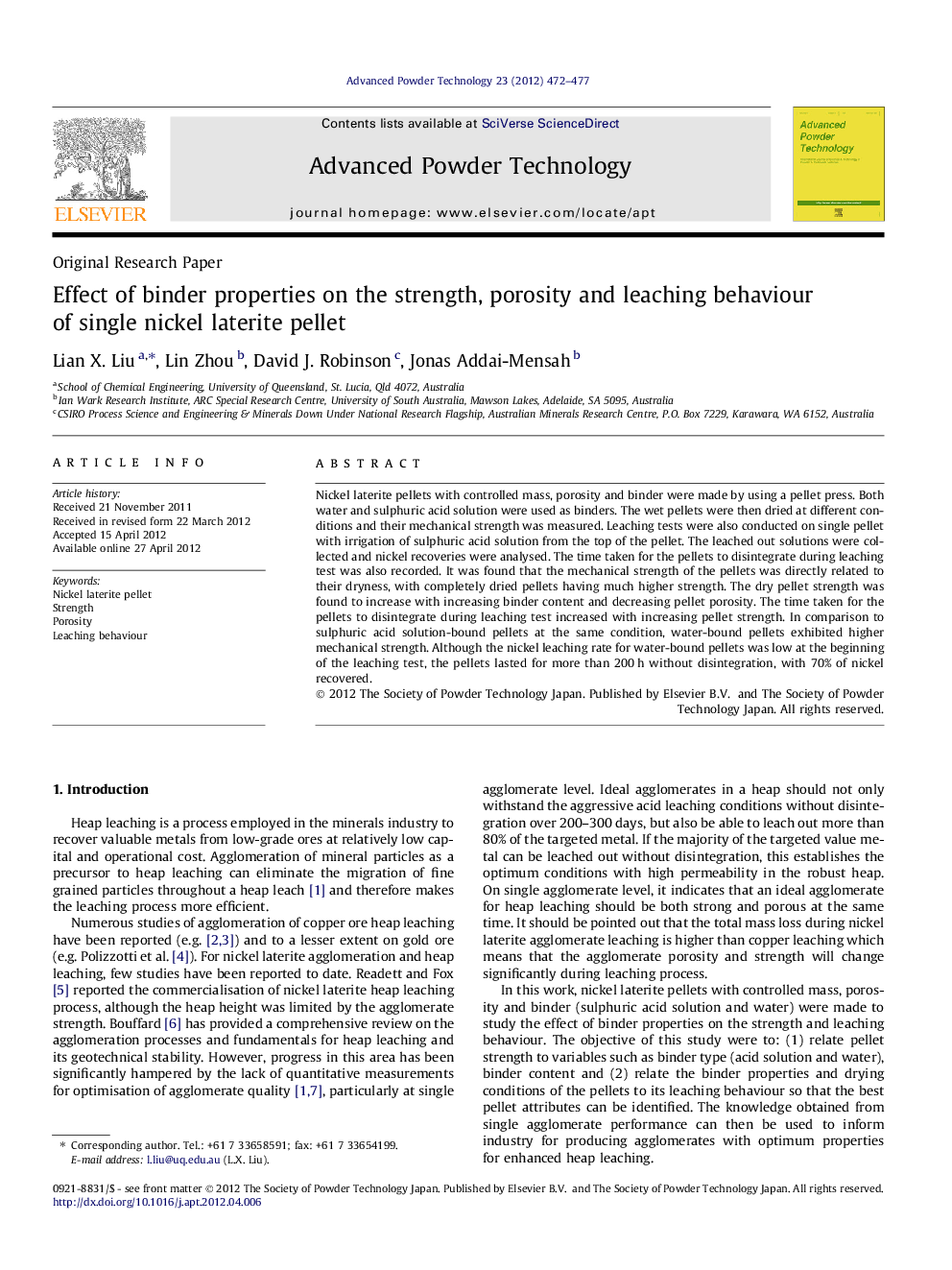| Article ID | Journal | Published Year | Pages | File Type |
|---|---|---|---|---|
| 144425 | Advanced Powder Technology | 2012 | 6 Pages |
Nickel laterite pellets with controlled mass, porosity and binder were made by using a pellet press. Both water and sulphuric acid solution were used as binders. The wet pellets were then dried at different conditions and their mechanical strength was measured. Leaching tests were also conducted on single pellet with irrigation of sulphuric acid solution from the top of the pellet. The leached out solutions were collected and nickel recoveries were analysed. The time taken for the pellets to disintegrate during leaching test was also recorded. It was found that the mechanical strength of the pellets was directly related to their dryness, with completely dried pellets having much higher strength. The dry pellet strength was found to increase with increasing binder content and decreasing pellet porosity. The time taken for the pellets to disintegrate during leaching test increased with increasing pellet strength. In comparison to sulphuric acid solution-bound pellets at the same condition, water-bound pellets exhibited higher mechanical strength. Although the nickel leaching rate for water-bound pellets was low at the beginning of the leaching test, the pellets lasted for more than 200 h without disintegration, with 70% of nickel recovered.
Graphical abstractFigure optionsDownload full-size imageDownload as PowerPoint slideHighlights► Nickel laterite pellets with controlled mass, porosity and binder were made. ► The mechanical strength of the pellets was measured and leaching test was conducted. ► Water-bound pellets are stronger than sulphuric acid solution bound pellets. ► The time to disintegration during leaching test increases with pellet strength. ► More than 70% of Ni is recovered during leaching for air-dried water-bound pellets.
